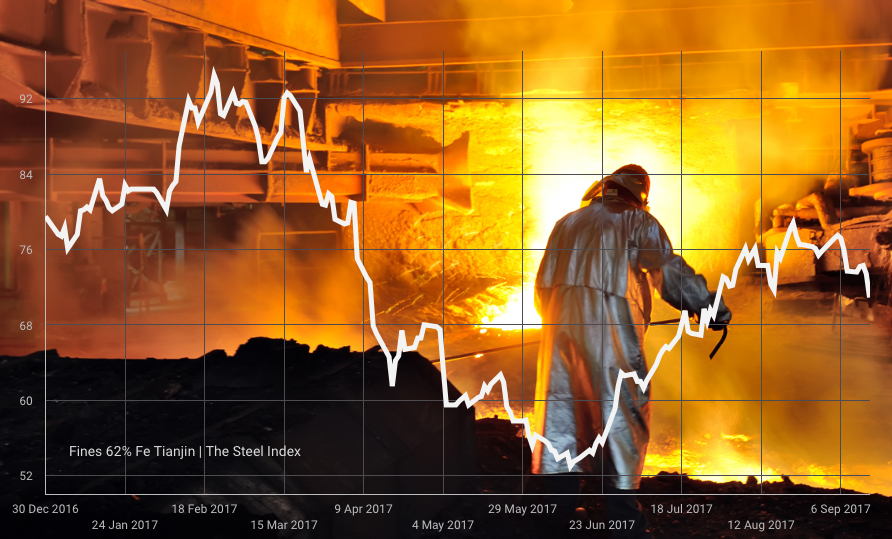 The Northern China import price of 62% Fe content ore slumped on Friday as the country’s steelmakers stoke production ahead of mandated cuts going into winter which could result in a sudden drop-off in iron ore demand.
The Northern China import price of 62% Fe content ore slumped on Friday as the country’s steelmakers stoke production ahead of mandated cuts going into winter which could result in a sudden drop-off in iron ore demand.
According to data supplied by The Steel Index the steelmaking raw material declined 3.4% to exchange hands for $70.90 per dry metric tonne, a seven week low. Data released by China’s steel industry association yesterday showed mills produced record tonnage for a second straight month in August. China produces as much steel as the rest of the world combined.
The iron ore price is still trading up by more than a third from its 2017 lows struck in July as Chinese anti-pollution crackdown on its heavy industries force the country’s steelmakers to chase high quality imports and avoid domestic producers which contend with Fe content in the 20%-range.
The premium paid for industry benchmark 62% iron content ore and lower grades this week hit a record high above $20 a tonne while premiums for lump ore over fines have also surged. Chinese mills increased imports by 2.8% in August compared to the month before even with inventories at the country’s ports – mostly made up of medium and lower grade ore – not far off record highs of 140m tonnes.
Year-to-date imports of high-quality iron ore from Australia, Brazil and South Africa are 6.7% higher than in 2016, already a record breaking year when imports topped one billion tonnes for the first time.
pile upBut industry analysts and even some producers have been calling for a correction for months now, even for higher grades. Last month investment bank Barclays said the key signal for the end of the iron ore rally will be “the start of a new steel product inventory restocking cycle.”
According to Mysteel, inventories of rebar used in construction rose by 118,000 tonnes to just over 4.7m this week, the highest since early May. The build-up in steel stocks also coincides with a slowing industrial activity within the country. China’s growth in factory output dipped to 6% year-on-year down from 6.4% in July and metals-intensive infrastructure spending also slowed.